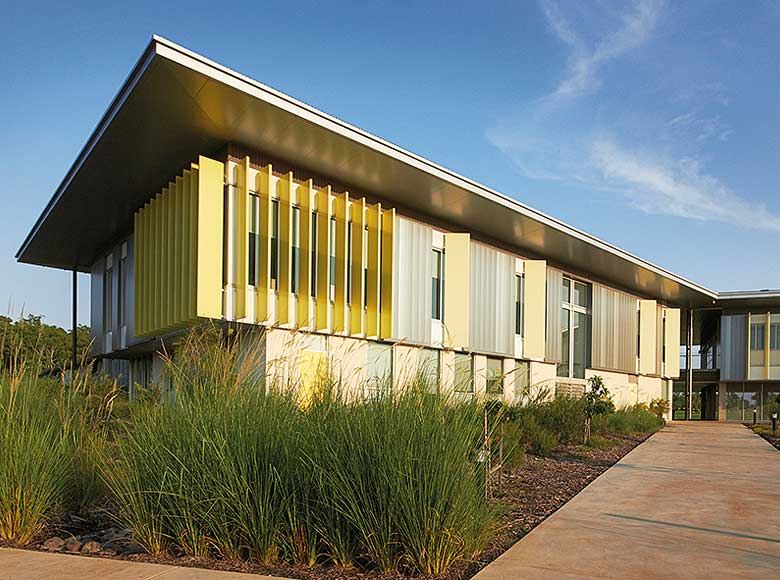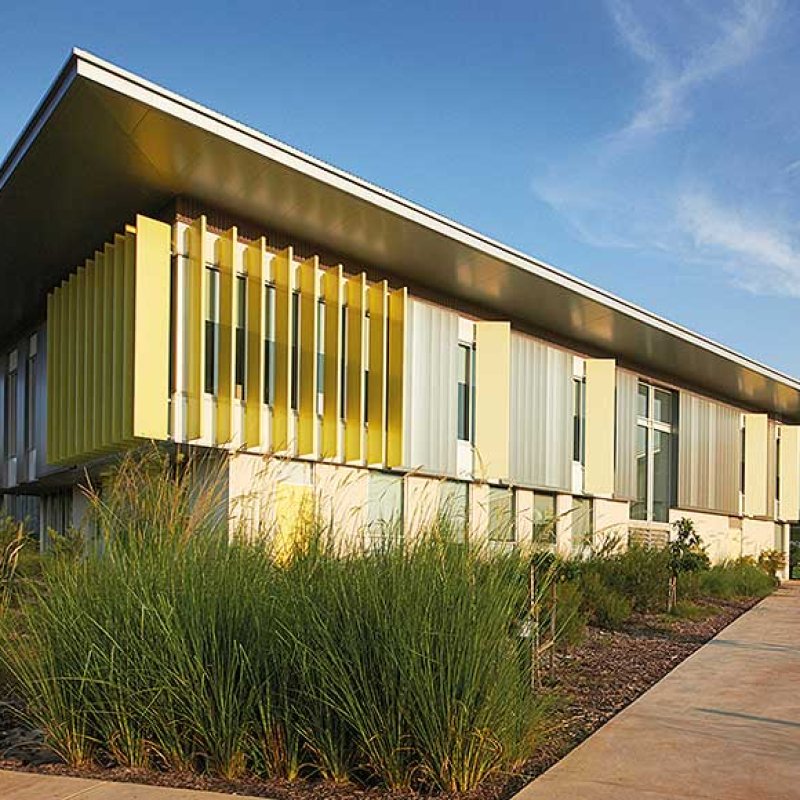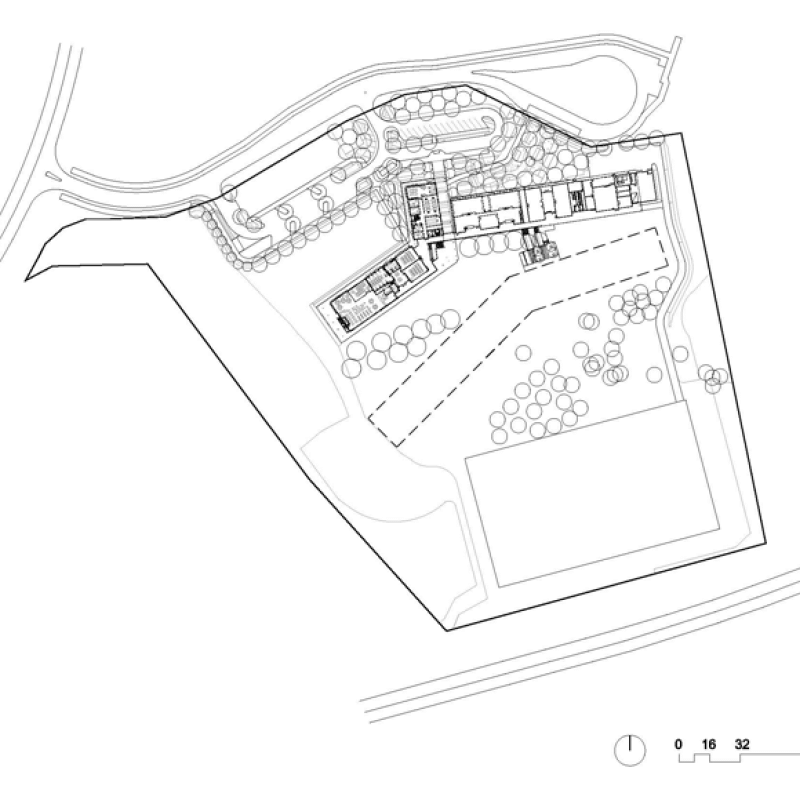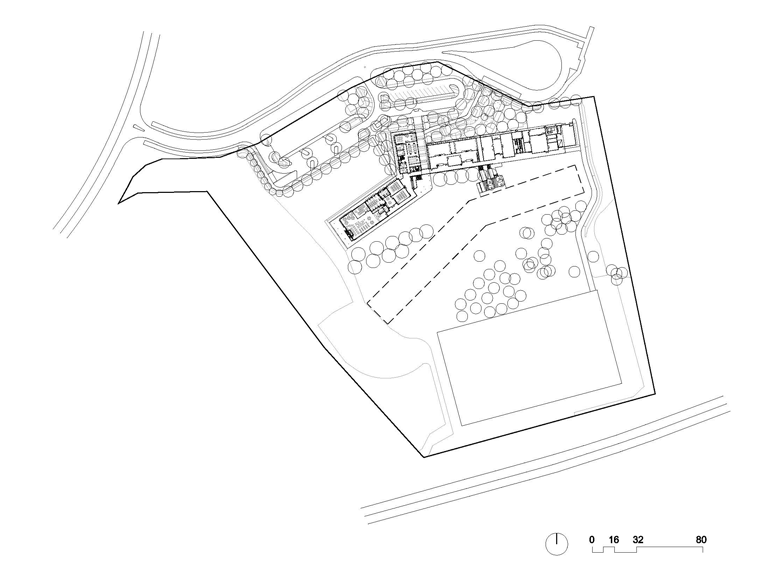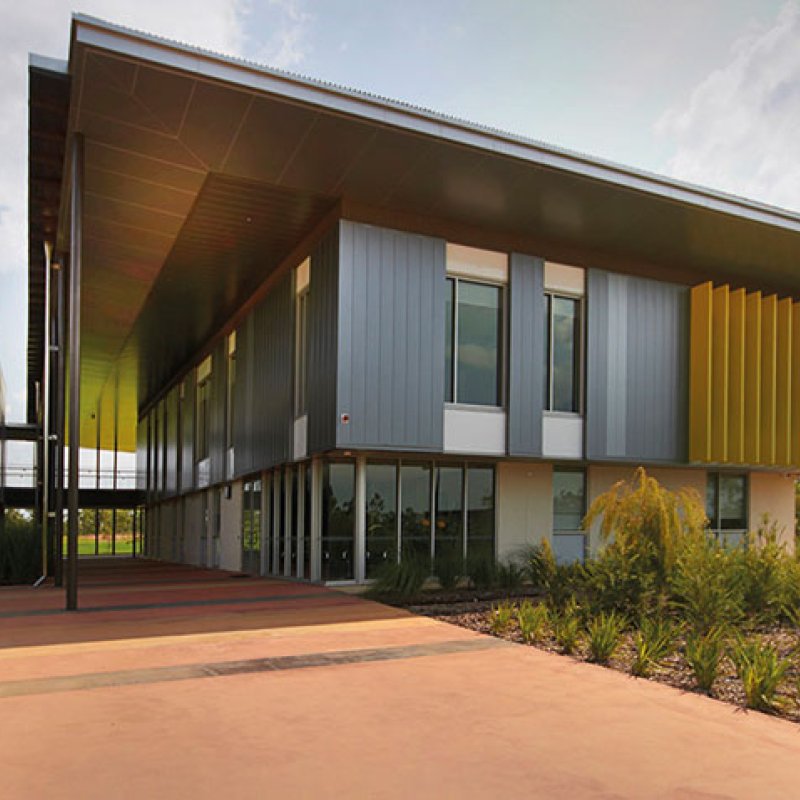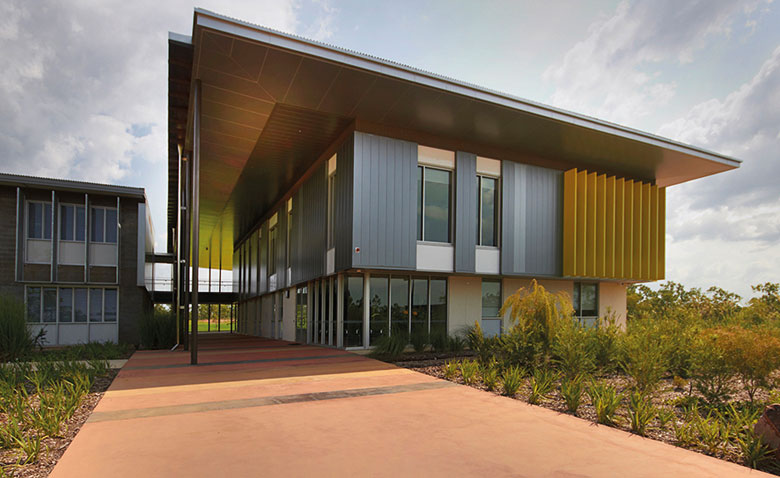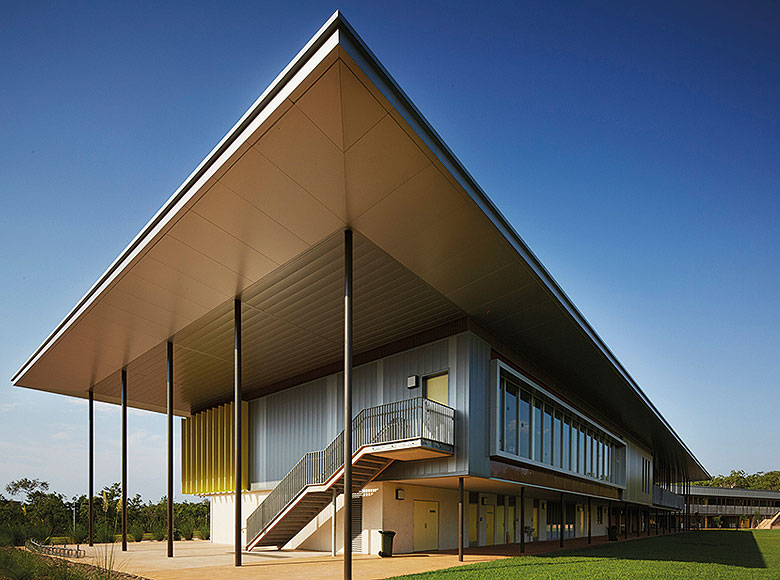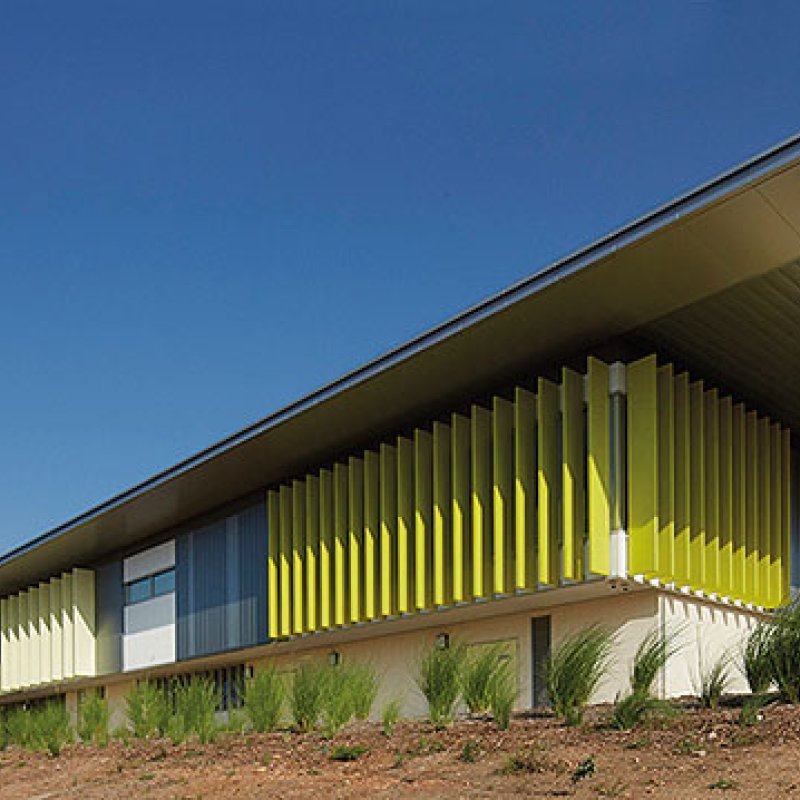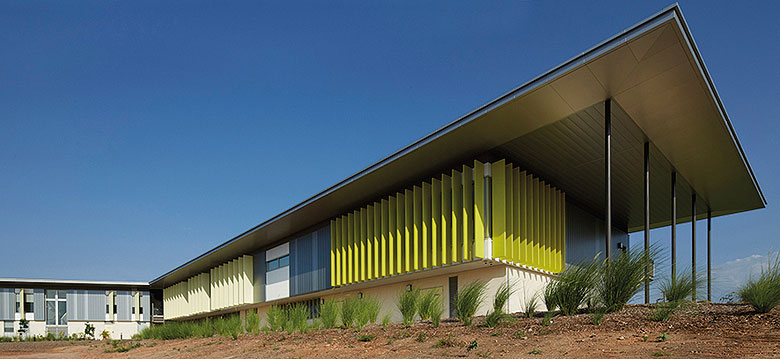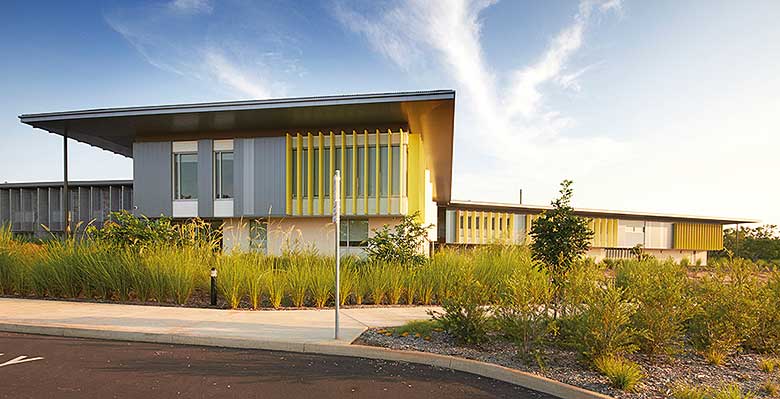Distinguished by a steel-tough outer 'shell' and a softer, open courtyard interior, this new Catholic secondary college at Palmerston – about 25 kilometres south-east of Darwin – is highly responsive to its site.
Perth-based architect David Gulland of HASSELL said that his response to the client's brief took him back to first principles. "It was good for the clients to see where we were coming from, talking about the site and a conceptual layout," Gulland says.
Concurrently, HASSELL was working on several other education projects that were at various stages of design and construction, including Dalyellup College in Perth. What made this one stand out was the unique attributes of the site.
"The site was a clear inspiration, partly because of the topography but also because CEO places a strong emphasis on spiritual and pastoral care, and the site was adjacent to indigenous heritage and natural heritage areas," Gulland says.
"This wasn't a typical school in a sub-division surrounded by roads, so the challenge for us was to make linkages to those places – gestures beyond the boundaries of the school – and also to capture views across Palmerston. The site conditions provided us with design opportunities for the community to see the school and vice versa: for the school to become a beacon in the landscape."
David Gulland, Architect, HASSELL
The nearby heritage site known as 17½ Mile Camp was a major defence point in World War II, when Darwin was under attack from Japanese bombers. Home to Australian and US troops in 1942, it now comprises preserved fox holes and interpretative signage that describes the site's history, and is part of a heritage trail that was completed while the school was under construction. The boundary between the two sites is deliberately low-key, to foster a sense of connection with the past for students.
On the other side of the school, an indigenous sacred site holds special significance for local Aboriginal people. "The school is keen to build relationships with the Larrakia nation, so the idea that there is a potential visual connection adjacent to the school became key to our orientation of the buildings at concept sketch stage," Gulland says. "We were keen to pay reference both to the sacred site and the heritage site – which occupies a topographical high point – and this influenced the orientation of the new buildings and the master plan approach to the site. We took into account the wind direction, soil conditions and topography as guiding elements driving the design."
The design strategy was inspired by the pods of the locally indigenous Kapok tree, which have a hard outer shell and are full of soft cotton-like material. "We opted for a hard exterior – using steel, concrete blocks and aluminium panels, and an open, courtyard-focused interior that is softer and very well connected," Gulland says.
The base of the buildings was constructed with concrete columns and block-work for fire engineering reasons, topped with a structural steel frame of 150x100RHS, 75SHS and 165CHS sections that support the upper level and roof. Roofing made from COLORBOND® steel in Steeline Steel Span 700 profile, in the colours Windspray® and Jasper® was used to clad the soaring roofs. The same material, in LYSAGHT CUSTOM ORB® profile, clads the upper walls – along with aluminium panel.
The two levels are visually separated by a shadow line which helps to break down the scale and the COLORBOND® steel wall cladding is applied in a rhythmic, ordered way.
"We developed a strong and direct plan layout, and wanted the cladding to be a modern interpretation of the existing site colours and textures."
David Gulland, Architect, HASSELL
For Gulland, the most successful aspect of the design is the way the buildings sit in the landscape and are knitted into the community. "It is a spectacular and beautiful site, and the way the building comes out of the hillside is a strong gesture," he says. "Inside, it is a series of learning spaces and learning communities which are all strongly knitted together.
"We didn't want to do something that was going to be driven by fashion rather than context and function," Gulland adds. "We want it to settle into the site and be timeless."
